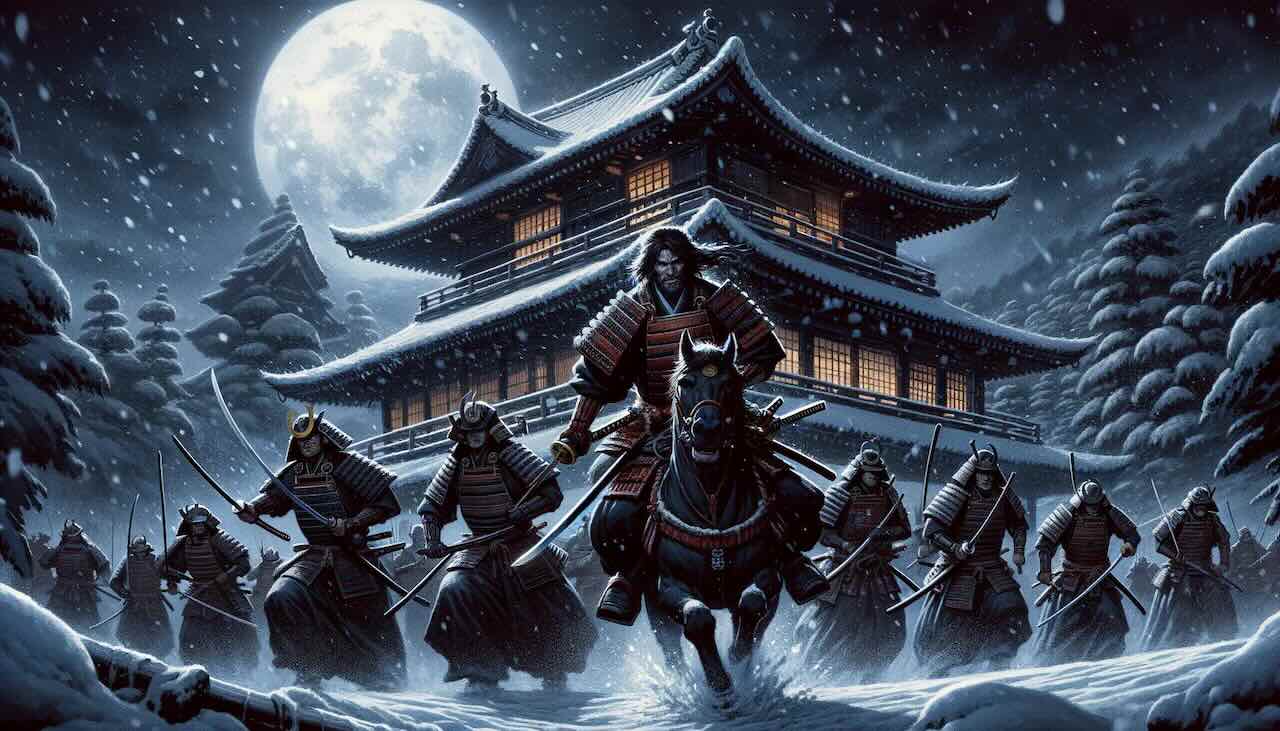In the annals of Japanese history, few stories of revenge are as famous as the tale of the 47 Ronin, also known as the Ako Incident. This event, which took place in the early 18th century, has become a symbol of loyalty, honor, and the samurai code of bushido.
The Trigger: Lord Asano’s Assault on Kira Kozuke-no-suke
The story begins in 1701 when Lord Asano Naganori, the daimyo of Ako, drew his sword and attacked Kira Kozuke-no-suke within the precincts of Edo Castle. This act was a grave offense, and Asano was ordered to commit seppuku (ritual suicide). As a result, his lands were confiscated, and his samurai became ronin (masterless samurai).
Oishi Kuranosuke and the Ronin’s Oath
Led by Oishi Kuranosuke, the former chief retainer of Lord Asano, 47 of these ronin secretly swore an oath to avenge their master’s death. However, Kira’s mansion was heavily guarded, and the ronin had to bide their time, waiting for the right moment to strike.
The Attack on Kira’s Mansion
On a snowy night in December 1702, the 47 Ronin launched their attack on Kira’s mansion. After a fierce battle, they succeeded in taking Kira’s head, thus avenging their fallen lord.
The Aftermath: Seppuku and Eternal Fame
The ronin then marched to the grave of Lord Asano at Sengaku-ji Temple, where they presented Kira’s head as an offering. Afterward, they turned themselves in to the authorities and were sentenced to commit seppuku. All 47 Ronin died with honor, having fulfilled their duty to their master.
The Legacy of the 47 Ronin
The story of the 47 Ronin has become a symbol of loyalty, sacrifice, and honor in Japanese culture. It has been adapted into numerous plays, novels, films, and other media, ensuring that the tale of these brave samurai will endure for generations to come.



